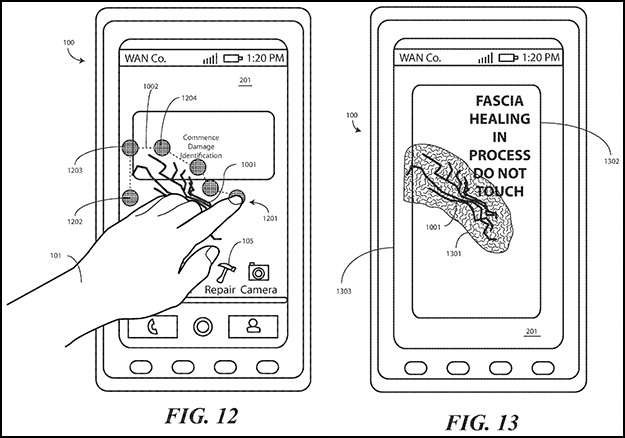Motorola Patent Reveals Smartphone Polymer Display Tech That Self-Heals Unsightly Cracks
Imagine if your smartphone could identify cracks in its display and then heal itself, much like your own body does when its suffers a scrape or bruise. It may sound like something out of a science fiction movie, but perhaps it is not all that far fetched. Motorola has been granted a patent by the United States Patent and Trademark Office (USPTO) for that very thing, and how it works is pretty interesting.
Motorola notes in its patent application that smartphones are becoming more prevalent and that one of the drawbacks is how easily touchscreen displays can suffer damage. In many cases, a cracked or shattered display panel renders the entire phone inoperable, depending on the extent of the damage. At the very least, it is a major annoyance to have a cracked phone.

To combat this common problem, Motorola suggests constructing phone displays with a "shape memory polymer," which is a material that Motorola says can heal deformations such as scratches through thermal cycling. This involves rapidly changing the temperature of the material until it returns to its original state. In contrast, today's displays have no way of healing themselves, so once they are scratched or cracked, they remain that way.
"Shape memory polymers are stimuli-responsive materials, in that a corrective response can be applied as a result to stimuli... In ordinary conditions, the shape memory polymer would remain stable in the deformed state and, accordingly, would remain scratched. However, when the shape memory polymer is exposed to an external stimulus, it yields a response by returning to its original, or default, state. Thus, by applying a stimulus the scratched shape memory polymer can revers some or all of the deformation and return ot its original condition defining a smooth surface," Motorola explains.

The ability to respond to a stimulus (heat, in this case) and return to an original state is what Motorola dubs the "polymer shape memory effect." As described in the patent, this would entail a heating element integrated into the phone. There are different ways of implementing this, one of which entails sandwiching transparent heating elements between the display and touchscreen layers.
There are different ways of triggering the healing process, too. In one example, Motorola says the phone would automatically detect the damage and get to work repairing it. In another example, the user would be able to select the area of damage, and once identified, the restoration process would begin.
We are skeptical that this kind of technology will show up anytime soon, though if Motorola were to somehow implement self-healing functionality into smartphones, it would be quite the feat.
Motorola notes in its patent application that smartphones are becoming more prevalent and that one of the drawbacks is how easily touchscreen displays can suffer damage. In many cases, a cracked or shattered display panel renders the entire phone inoperable, depending on the extent of the damage. At the very least, it is a major annoyance to have a cracked phone.

To combat this common problem, Motorola suggests constructing phone displays with a "shape memory polymer," which is a material that Motorola says can heal deformations such as scratches through thermal cycling. This involves rapidly changing the temperature of the material until it returns to its original state. In contrast, today's displays have no way of healing themselves, so once they are scratched or cracked, they remain that way.
"Shape memory polymers are stimuli-responsive materials, in that a corrective response can be applied as a result to stimuli... In ordinary conditions, the shape memory polymer would remain stable in the deformed state and, accordingly, would remain scratched. However, when the shape memory polymer is exposed to an external stimulus, it yields a response by returning to its original, or default, state. Thus, by applying a stimulus the scratched shape memory polymer can revers some or all of the deformation and return ot its original condition defining a smooth surface," Motorola explains.

The ability to respond to a stimulus (heat, in this case) and return to an original state is what Motorola dubs the "polymer shape memory effect." As described in the patent, this would entail a heating element integrated into the phone. There are different ways of implementing this, one of which entails sandwiching transparent heating elements between the display and touchscreen layers.
There are different ways of triggering the healing process, too. In one example, Motorola says the phone would automatically detect the damage and get to work repairing it. In another example, the user would be able to select the area of damage, and once identified, the restoration process would begin.
We are skeptical that this kind of technology will show up anytime soon, though if Motorola were to somehow implement self-healing functionality into smartphones, it would be quite the feat.

